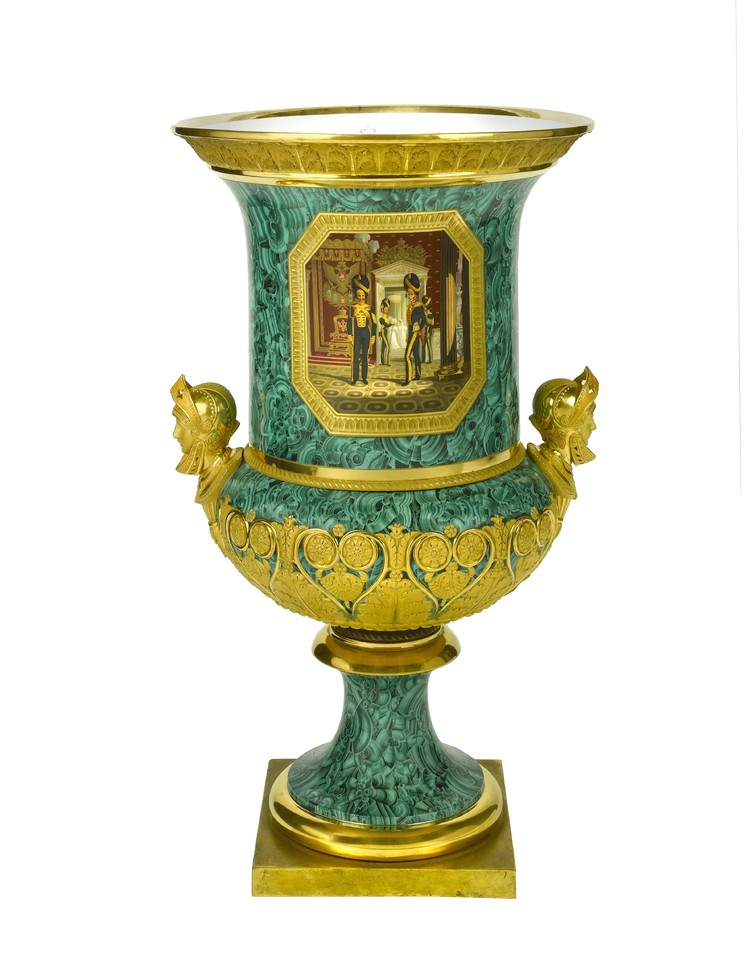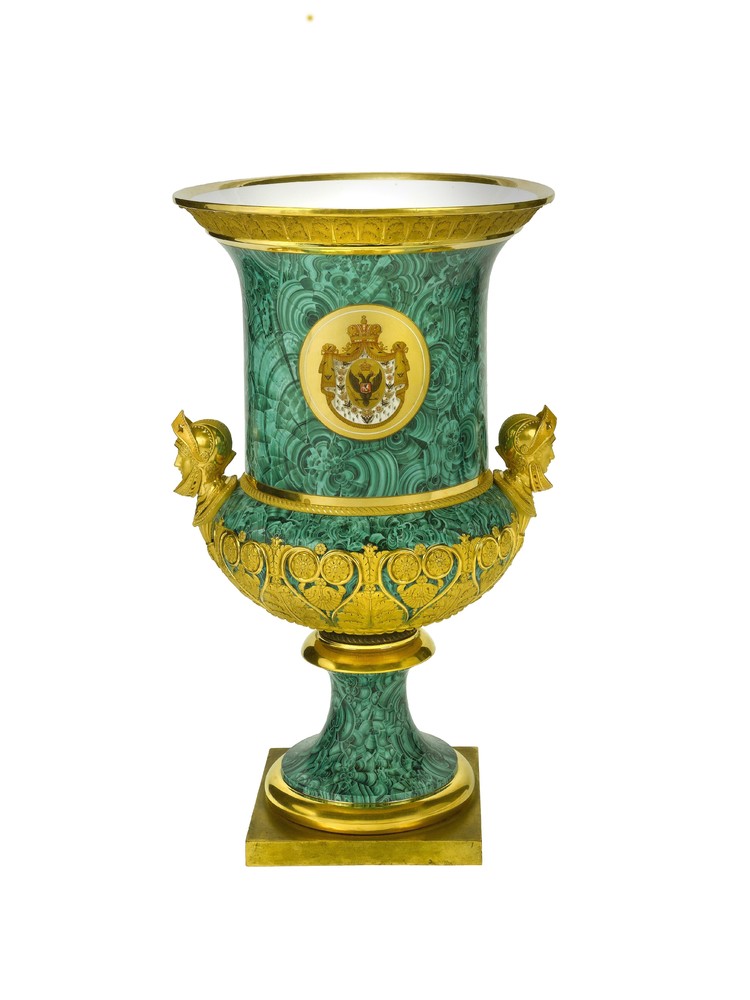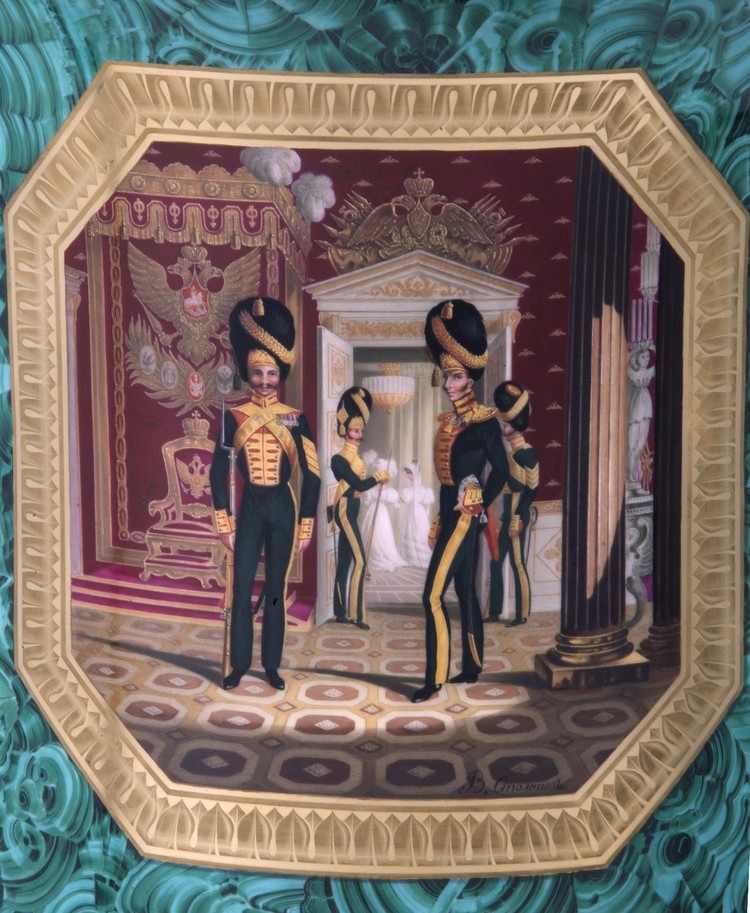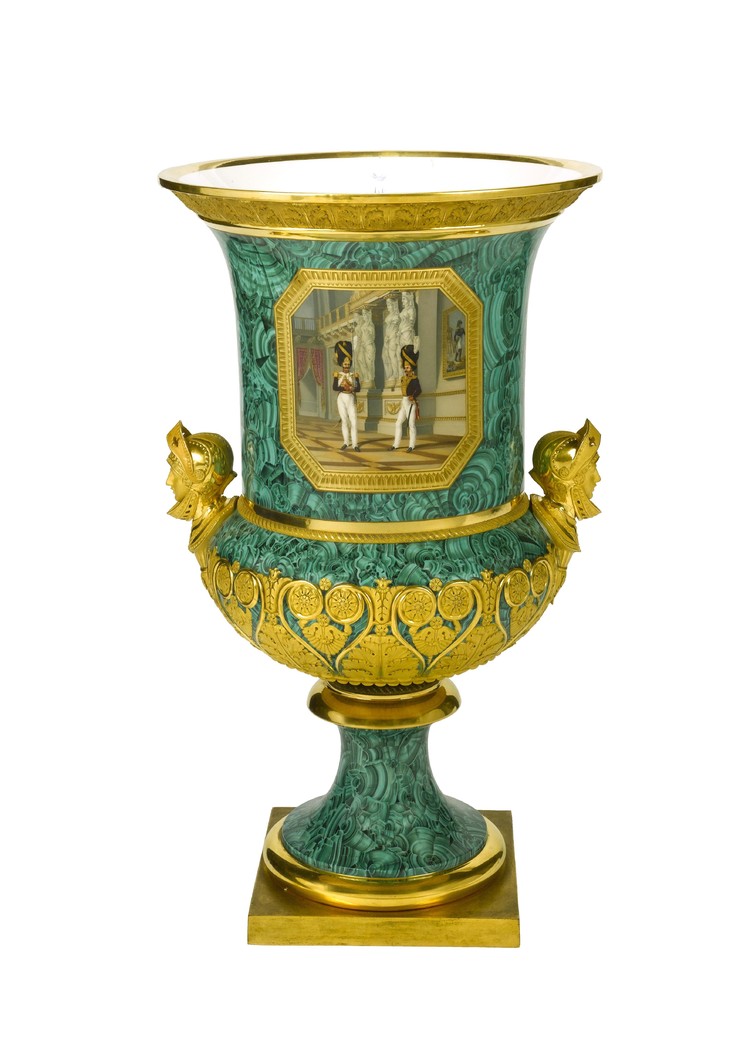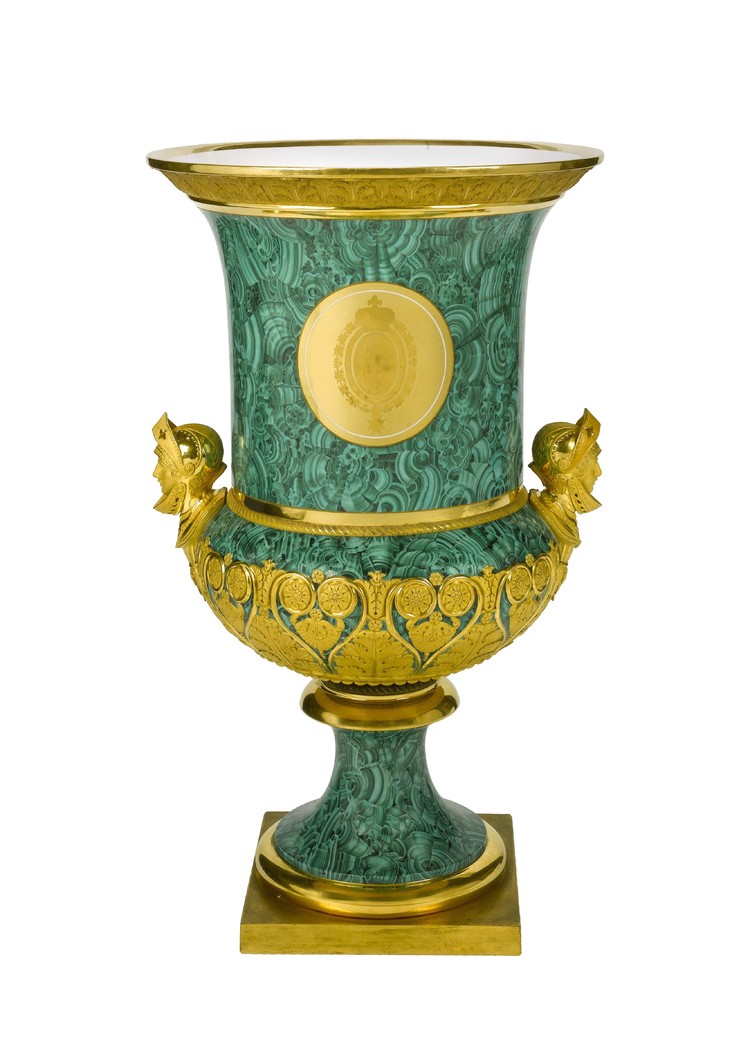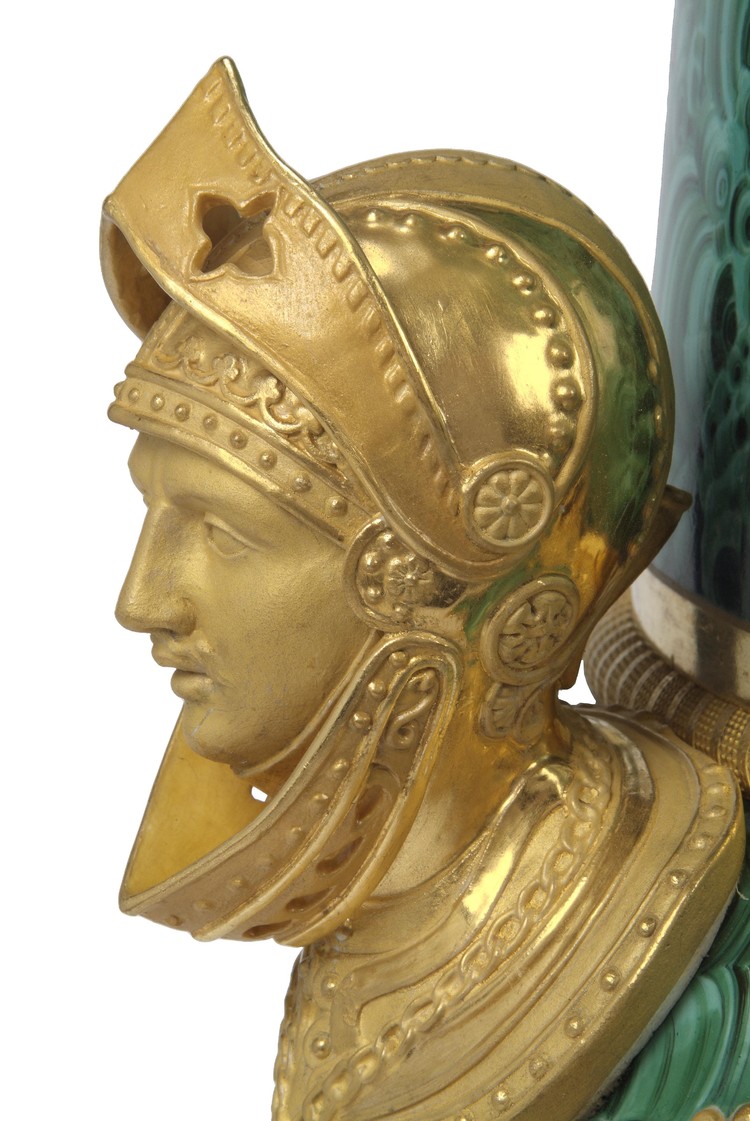A special place in the collection of the Fabergé Museum is held by gala porcelain vases decorated with paintings. The story of their creation has its origins in the Imperial Porcelain Factory in the early 19th century, but the manufacture of palace vases truly flourished during the reign of Nicholas I (1815-1855). Most of the vases in the museum’s collection were made in that period. Such items were often used as diplomatic gifts and were sent to many of the royal houses of Europe.
Among the best works produced by the Imperial Porcelain Factory in this period are the monumental paired krater vases with “malachite” backgrounds. The front side of the vases depicts palace grenadiers in the Throne Halls of the Winter Palace and Tuileries, while the rear side features the coat of arms of Russia and France. Military scenes decorated Russian imperial porcelain from the very start of the factory’s existence in St. Petersburg. This colorful series demonstrates the extraordinary beauty of courtly life in the Winter Palace and service in the company formed in 1817 from the lower ranks of the Life Guard, who proved their mettle in the Patriotic War of 1812 and subsequently served in the Winter Palace as a result. The painting was made by V. Stoletov.
Completed in 1830, these vases were given by Emperor Nicholas I to the French Ambassador to Russia, Casimir-Louis-Victurnien de Rochechouart, Duke of Mortemart
